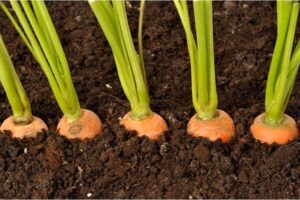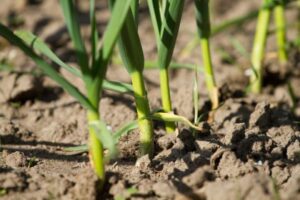
Carrots are a cool weather veggie that thrive when planted in the early spring or late summer seasons in Massachusetts. Their delicious crunchy roots and nutrient-dense composition make them a worthwhile crop for any backyard garden.
Determining the right planting times will ensure your carrots grow to their full potential.
This guide will breakdown the ideal sowing windows and step-by-step process for growing hearty carrot crops in the Bay State.
Optimal Planting Periods for Carrots in Massachusetts

There are two primary seasons suitable for planting baby carrots in Massachusetts – early spring and late summer. Here’s a breakdown:
- Early Spring (March-April): As soon as the soil can be worked, usually around Mid-March through early April, it’s time to direct sow carrot seeds. The soil temperature should be at least 40°F. Cool nights and mild days provide ideal growing conditions.
- Late Summer (Late July-August): For a fall harvest, plant another carrot crop 6-8 weeks before the first expected fall frost. This allows carrots ample time to reach maturity before temperatures drop.
Avoid planting during the hot summer months of June-July when the soil is warm. Carrots prefer cooler temps for germination and prefer under 70°F soil. Hot weather causes them to bolt, producing woody inedible roots. Stick to the shoulder seasons for your best chance of success.
Step-by-Step Process for Planting Carrot Seeds
Use this step-by-step process for successfully sowing carrot seeds and harvesting a bountiful crop:
Step 1: Prepare the Soil: Loosen soil to a depth of 8-10 inches by double digging or tilling. Incorporate 2-3 inches of compost or other organic matter. Rake the soil smooth.
Step 2: Plant the Seeds: Space carrot seeds 1/2 inch apart in rows 12-18 inches apart. Press each seed 1/4 inch into the soil. Cover lightly with 1/4 inch of loose soil.
Step 3: Water Gently: Keep the soil continuously moist but not soaked until germination, about 10-14 days. Carrot seeds need moisture to swell before sprouting.
Step 4: Thin Once Germinated: Thin seedlings to 2 inches apart once they emerge. Snip extras at soil level for a neat row.
Step 5: Weed Management: Hand pull weeds regularly, being careful not to disturb carrots. Mulch after thinning to suppress weeds.
Step 6: Water Deeply: Provide 1-2 inches of water per week, either through rain or irrigation. Water at the soil surface, not foliage to prevent disease.
Step 7: Fertilize at 4-6 Weeks: Side dress with compost, fish emulsion or other organic fertilizer to boost growth.
Step 8: Harvest from Late Summer-Fall: Begin harvesting baby carrots in late summer when they reach desired size. Larger roots will be ready by early-mid fall before hard frosts arrive.
Post-Planting Care Tips for Carrots
Once sowing is complete, maintain your carrot patch with these best practices:
- Pull emerging weeds frequently when carrots are small to avoid competition. Mulch to smother later-emerging weeds.
- Water deeply and infrequently to encourage long taproots rather than lots of top growth. About 1-2″ per week total.
- Side dress with compost or organic fertilizer at 4-6 weeks after emergence to boost root size.
- Use floating row cover fabric or mesh to keep out carrot rust flies and other pests until harvest.
- Thin baby carrots to 2″ apart to allow plenty of space to grow into full size without touching.
- Leave 18-24″ between rows to allow for harvest, weeding and air circulation to avoid disease.
Unique Varieties to Try in Massachusetts
For the best chance of success, choose carrot varieties bred for cool season growing. Here are stand-out carrot types for Massachusetts gardens:
1. Nantes:
Short, blunt root that retains sweetness even when mature. Good choice for container gardening. Try ‘Parisian’ or ‘Nantucket’.
2. Chantenay:
Conical shape is easy to harvest and stores well. These have good disease resistance like ‘Red Cored Chantenay’.
3. Danvers:
A classic long, tapered variety ideal for cold climates with deep, nutty flavor. Try ‘Mokum’ or ‘Danvers 126’.
4. Rainbow:
Colorful carrot medleys add visual appeal like ‘Harvest Moon’ with orange, yellow, red and purple roots.
5. Cut & Come Again:
Small-rooted bunny types regrow if harvested young instead of thinning. Their foliage can remain edible. Try ‘Purple Haze’ or ‘Atomic Red’.
Conclusion
With correct planting dates and aftercare, Massachusetts gardens can produce abundant crunchy carrots from spring through fall. I hope this guide helps you sow and successfully harvest your own sweets roots this season! Let me know if you have any other carrot growing questions.








One Comment